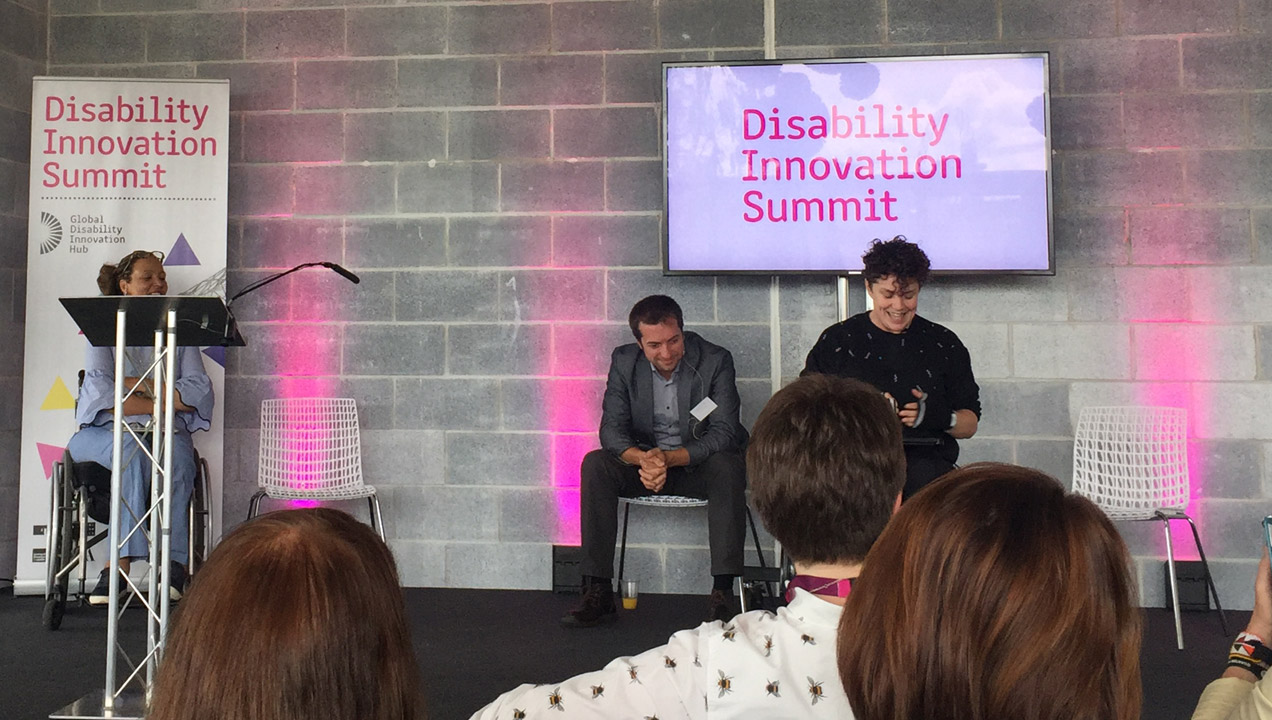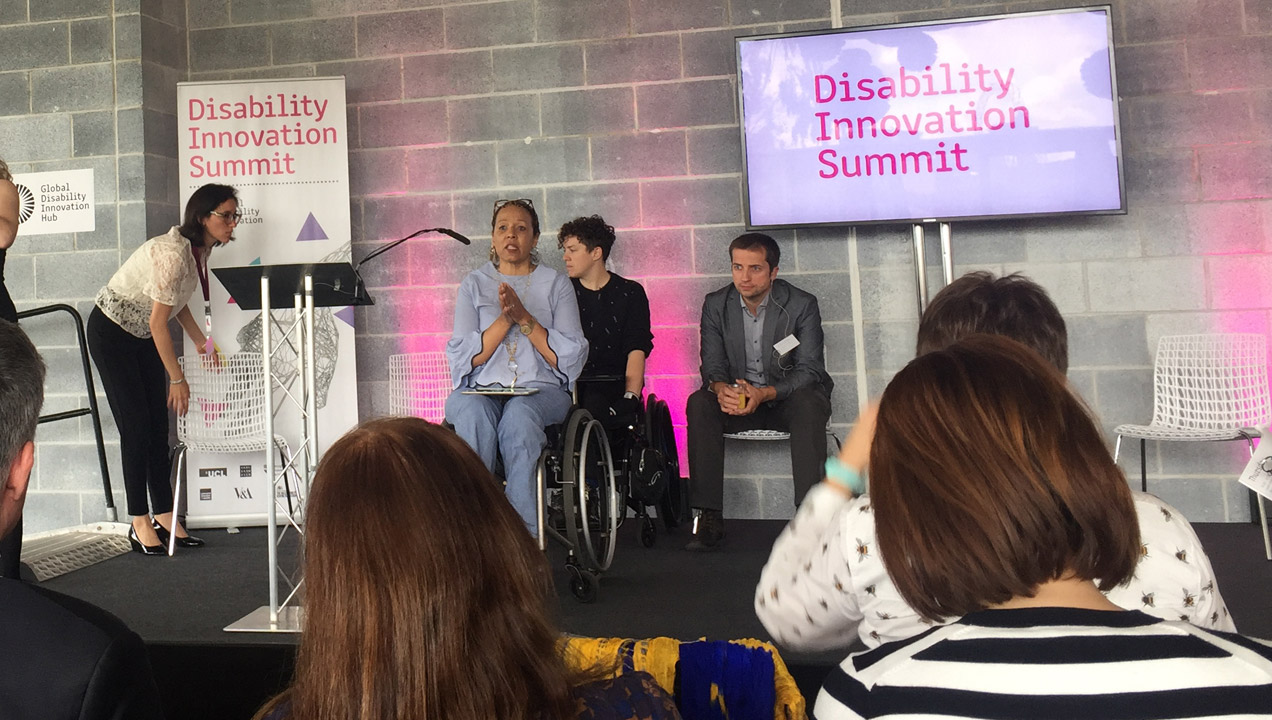Inclusive Design at the Disability Innovation Summit
Last week Monica and I attended the Disability Innovation Summit and came back with some fascinating insights into the way that Design Thinking and Inclusive Design aren’t too different. Here are three of the themes that struck a chord with us:

Jess Thom
By working together, we can create less disabling spaces, systems and attitudes
Jess Thom, Artist and Campaigner
People with disabilities encounter problems in their lives primarily because they are living in a world that has been designed for people with a different set of capabilities from them. If you can imagine a world where the only way that you could send an email was by playing the flute you would be on the right track to imagining the frustration that this might cause.
Many of the talks looked at the recent changes in attitude around inclusive design, a few years ago companies would run through a checklist to make their business “accessible” but they wouldn’t give any thought to making that a part of the primary design.
Never underestimate the power of dissatisfaction
Rama Gheerawo, Helen Hamlyn Centre for Design
As people with disabilities gain positions of power within their organizations, they are able to push through changes that people lower in the hierarchy cannot. Just as we discovered when trying to introduce Design Thinking to large organizations, you need someone on the executive level to be an evangelist for real change. One example from the summit was from the chief accessibility officer at Microsoft, who happened to be deaf and highlighted problems where inter-office communication was conducted exclusively through Skype calls. Without her insight they wouldn’t have known that this would prevent their deaf employees from participating.
Listening to people with disabilities and including them in the design process is essential to making accessibility work, their lived experience trumps whatever vague ideas designers have about best practice. People in the disabled community want to help make the world more accessible, all that designers have to do is reach out and network at events like this Summit.

Charlotte V. McClain-Nhlapo
Products that are well designed, they work for everyone
Charlotte V. McClain-Nhlapo, World Bank Group
Improving design for accessibility benefits people without disabilities as much as people with disabilities. Think how often people use a lift instead of the stairs just because they are tired or consider how often people watch television and films with the subtitles turned on to help deal with background noise. Many popular products, particularly those sold through late night infomercials, were originally designed with people with disabilities in mind and then expanded into the general market to keep production costs down.
Assistive technology has often been prohibitively expensive because of the limited number of consumers but as the life expectancy of each generation grows, the number of elderly people who will need accessibility is going to skyrocket. At present over 15% of the world’s population are living with a disability, up 5% since the 1970s, so the fight for inclusive design has never been more important.
